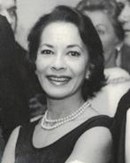Entezam, Abbas Amir
Abbas Amir Entezam (Persian: عباس امیرانتظام, b. August 18, 1932, Tehran, Iran – d. July 12, 2018, Tehran, Iran) was an Iranian politician who served as deputy prime minister in the Interim Cabinet of Mehdi Bazargan in 1979. In 1981 he was sentenced to life imprisonment on charges of spying for the United States, a charge critics suggest was a cover for retaliation against his early opposition to theocratic government in Iran. He was the longest-held political prisoner in the Islamic Republic of Iran. As of 2006 he had been in jail for seventeen years and in and out of jail for an additional ten years, altogether for 27 years.
Entezam was born into a middle-class family in Tehran in 1932. He studied electro-mechanical engineering at the University of Tehran and graduated in 1955.
In 1956, Entezam left Iran for study at Institute of France (Paris). He then went to the United States and completed his postgraduate education at the University of California in Berkeley.
After graduation, he remained in the United States and worked as an entrepreneur.
Around 1970, Entezam's mother was dying and he returned to Iran to be with her. Because of his earlier political activities, the Shah's Intelligence Service would not allow him to return to the United States. He stayed in Iran, marrying, becoming a father and developing a business in partnership with his friend and mentor, Mehdi Bazargan. Bazargan appointed him as the head of the political bureau of the Freedom Movement of Iran in December 1978, replacing Mohammad Tavasoli. In 1979, the Shah was overthrown by the Iranian Revolution. The revolutionary leader Ayatollah Khomeini, recently returned to Iran, appointed Bazargan as prime minister of the provisional revolutionary government. Bazargan, in turn, asked Entezam to be the deputy prime minister and the official spokesperson for the new government.
While serving as deputy prime minister, in April 1979, Entezam actively advocated the retirement of army officers above the rank of brigadier general. In 1979, Entezam succeeded in having the majority of the cabinet sign a letter opposing the Assembly of Experts, which was drawing up the new theocratic constitution where democratic bodies were subordinate to clerical bodies. His theocratic opponents attacked him and, in response, in August 1979, Bazargan appointed Entezam to become Iran's ambassador to Denmark.
In December 1979, Bazargan asked Entezam, who had been serving as ambassador to Sweden, to come back quickly to Tehran. Upon returning to Tehran, Entezam was arrested because of allegations based on some documents retrieved from the United States embassy takeover, and imprisoned for a life term. He was released in 1998 but in less than 3 months, he was rearrested because of an interview with the Tous daily newspaper, one of the reformist newspapers of the time.
In smuggled letters, Entezam related that on three separate occasions, he had been blindfolded and taken to the execution chamber - once being kept "there two full days while the Imam contemplated his death warrant." He spent 555 days in solitary confinement, and in cells so "overcrowded that inmates took turns sleeping on the floor - each person rationed to three hours of sleep every 24 hours." During his imprisonment, Entezam experienced permanent ear damage, developed spinal deformities, and suffered from various skin disorders.
Entezam died of a heart attack in Tehran on July 12, 2018. He was buried the following day in Behesht e Zahra cemetery, with Ayatollah Montazeri's son leading the funeral prayer.


